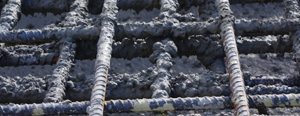
The Harbors Division wanted the Engineering team to evaluate the durability of reinforced concrete specimens containing various pozzolans and chemical admixtures exposed to a marine environment.
Test panels were exposed in the tidal zone in Honolulu Harbor for a period of 9-10 years from 2002 to 2012. During exposure, the panels were monitored for half-cell potential, chloride concentrations, cracking and visible signs of corrosion.

- The panel using Krystol Internal Membrane (KIM) performed well, with
low half‐cell readings and no visible signs of corrosion after 10 years exposure.
- Panels using the remaining admixtures, Rheocrete 222+, FerroGard 901, Xypex Admix C-2000 and a latex modifier exhibited inconsistent to poor results.
- Calcium nitrite based corrosion inhibitors delayed the onset of corrosion at a dose of 20 L/m3, but did not provide reliable protection at a lower dose of 10 L/m3. These admixtures were not effective at reducing the ingress of chlorides.
- Pozzolans (15% fly ash and 5% silica fume) combined with a reduced water-cement ratio (0.36 compared to other samples batched at 0.40) performed well, although poor dispersion of the silica fume compromised the performance of at least one panel.
- Control panels (no admixture or Pozzolan) with a water-cement ratio of 0.40 experienced corrosion-induced cracking and rust residue.
These findings are particularly relevant because they are based on field exposure in a harsh costal environment. This is the best type of testing because the exposure simulates the actual service conditions of a real structure. Laboratory tests are generally short term, and are designed to provide accelerated results using conditions that do not always model real life. Many products may perform well in a short term laboratory experiment, but perform poorly over the long term in real world conditions.
This report proves that KIM is effective at preventing corrosion over the long term under real world conditions. Of equal importance, KIM significantly outperformed other permeability reducing admixtures.



